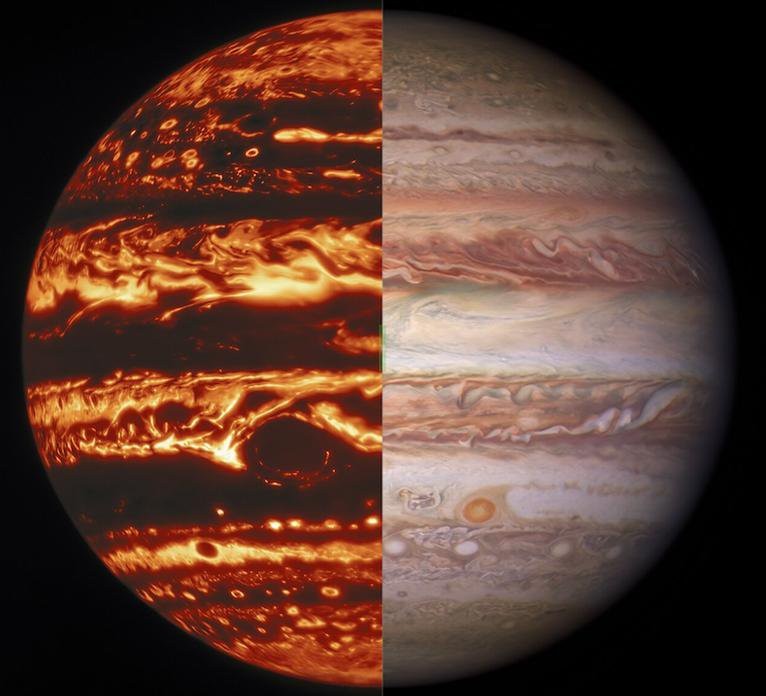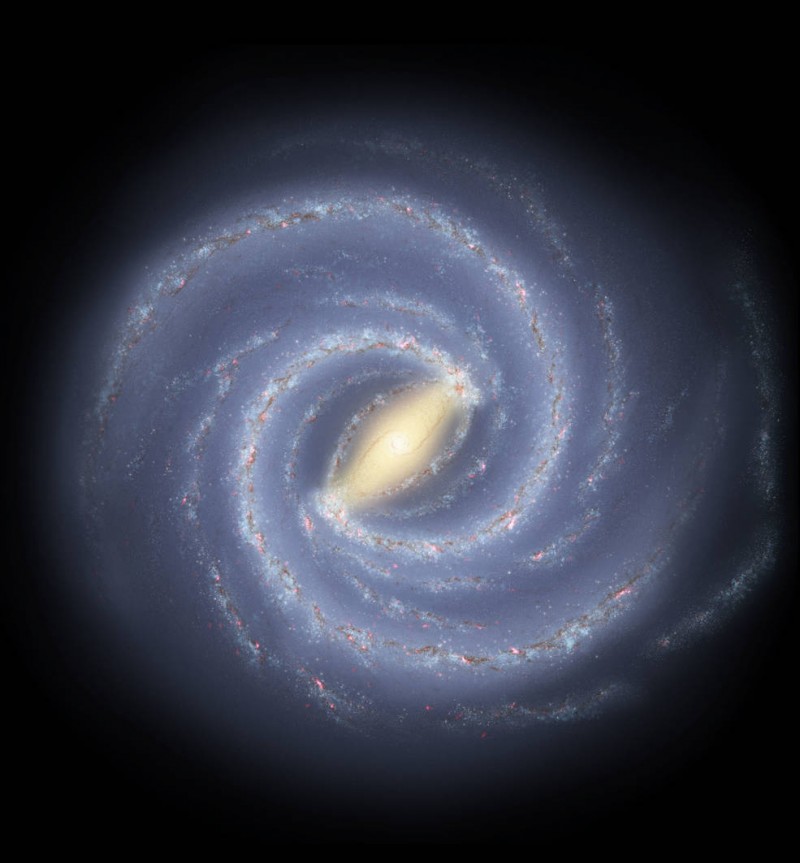News
NASA Provides Update on Webb Telescope Launch
Tuesday, November 23rd 2021 05:13 PM
The launch readiness date for the James Webb Space Telescope is moving to no earlier than Dec. 22 to allow for additional testing of the observatory, following a recent incident that occurred during Webb’s launch preparations.
The incident occurred during operations at the satellite preparation facility in Kourou, French Guiana, performed under Arianespace overall responsibility. Technicians were preparing to attach Webb to the launch vehicle adapter, which is used to integrate the observatory with the upper stage of the Ariane 5 rocket. A sudden, unplanned release of a clamp band – which secures Webb to the launch vehicle adapter – caused a vibration throughout the observatory.
A NASA-led anomaly review board was immediately convened to investigate and instituted additional testing to determine with certainty the incident did not damage any components. NASA and its mission partners will provide an update when the testing is completed at the end of this week...
Read More
Read More
NASA's James Webb Space Telescope Primed to Lift the Haze Surrounding Sub-Neptunes
Wednesday, November 17th 2021 06:59 PM
Detailed atmospheric studies will provide key insights into some of the most common – and mysterious – planets known in the galaxy.
More than half of the Sun-like star systems surveyed in the Milky Way harbor a mysterious type of planet unlike any in our own solar system.
Larger than Earth, smaller than Neptune, and orbiting closer to their stars than Mercury orbits the Sun, these warm-to-hot sub-Neptunes are the most common type of planet observed in the galaxy. But although researchers have been able to measure basic properties – including size, mass, and orbit – of hundreds of these planets, their fundamental nature remains unclear.
Are they dense, Earth-like balls of rock and iron, blanketed in thick layers of hydrogen and helium gas? Or less dense mixtures of rock and ice, surrounded by steamy, water-rich atmospheres? With limited data and no planets of similar size and orbit in our own solar system to use for comparison, it has been difficult to answer...
Read More
Read More
First crewed Artemis Moon landing delayed until at least 2025
Thursday, November 11th 2021 05:20 PM
More than 50 years after the last Apollo mission, Artemis intends to send humans back to the Moon yet again. However, NASA recently announced the first crewed lunar landing of Artemis won't take place until at least 2025.
NASA administrator Bill Nelson today announced a new timeline for near-term Artemis missions, pushing back the first post-Apollo lunar landing until at least 2025. The schedule changes were driven by budgetary constraints, COVID delays, infrastructure and testing delays for the Space Launch System (SLS), and more than six months of litigation related to Blue Origin’s unsuccessful legal challenge to NASA’s selection of rival SpaceX as the sole winner of the lunar lander contract.
“It’s clear to me that the agency will need to make serious changes for the long-term success of the program,” Nelson said during the Tuesday briefing. He added that the previous administration’s target of a 2024 landing “was not grounded in...
Read More
Read More
The first 'space hotel' plans to open in 2027
Wednesday, November 10th 2021 05:42 PM
The word vacation conjures many images: pristine beaches, glittering ski slopes, outstretched highways and theme parks. It doesn’t call to mind cosmic journeys upon colossal rotating wheels, or vistas defined by the long arc of Earth’s surface — but it might soon.
Six decades in, the Space Age is marching steadily into its commercial phase, allowing more and more private individuals to purchase passage beyond Earth’s atmosphere. In just the past few months, the billionaires Jeff Bezos and Richard Branson have paid to cross or arrive at the edge of the Kármán line, the boundary between our atmosphere and outer space. Beside a budding clientele of Bezos and Branson stature, the era of full-fledged pleasure trips to space seems at hand, even for a multi-day escape.
To accommodate such a jaunt, the Sacramento start-up Orbital Assembly Corporation (AOC) has announced plans to open a space hotel by 2027. As the first of its kind, Voyager Statio...
Read More
Read More
The Road to Launch and Beyond for NASA’s James Webb Space Telescope
Wednesday, November 3rd 2021 04:13 PM
Now that NASA’s James Webb Space Telescope has safely arrived at its launch site in French Guiana, on the northeastern coast of South America, technical teams have begun making progress on the final checklist of preparations before liftoff later this year.
These preparations are expected to last 55 days from the observatory’s arrival by ship to the day of launch.
After Webb arrived at the Arianespace clean room facilities in French Guiana, contamination control technicians ensured the observatory is clean and contaminant free following its 5,800 mile journey. Then engineers ran a final set of electrical and functional tests and checked the stowed mechanical configuration to ensure delivery went smoothly. A trained crew in special hazmat suits will soon begin the two-week process of loading the spacecraft with the hydrazine fuel and nitrogen tetroxide oxidizer it will need to power its rocket thrusters to maintain its orbit. Next, Webb will move to the nearby vehic...
Read More
Read More
Mysterious “Superbubble” Hollows Out Nebula in New Hubble Image
Tuesday, November 2nd 2021 04:14 PM
N44 is a complex nebula filled with glowing hydrogen gas, dark lanes of dust, massive stars, and many populations of stars of different ages. One of its most distinctive features, however, is the dark, starry gap called a “superbubble,” visible in this Hubble Space Telescope image in the upper central region.
The hole is about 250 light-years wide and its presence is still something of a mystery. Stellar winds expelled by massive stars in the bubble's interior may have driven away the gas, but this is inconsistent with measured wind velocities in the bubble. Another possibility, since the nebula is filled with massive stars that would expire in titanic explosions, is that the expanding shells of old supernovae sculpted the cosmic cavern.
Astronomers have found one supernova remnant in the vicinity of the superbubble and identified an approximately 5 million year difference in age between stars within and at the rim of the superbubble, indicating multiple, chain-re...
Read More
Read More
NASA’s Juno: Science Results Offer First 3D View of Jupiter Atmosphere
Friday, October 29th 2021 04:19 PM
Jupiter's banded appearance is created by the cloud-forming weather layer. This composite image shows views of Jupiter in infrared and visible light taken by the Gemini North telescope and NASA's Hubble Space Telescope.
This illustration combines an image of Jupiter from the JunoCam instrument aboard NASA's Juno spacecraft with a composite image of Earth to depict the size and depth of Jupiter's Great Red Spot. Credit: JunoCam
Data collected by the JunoCam imager and microwave radiometer from a flyover of the Great Red Spot on July 11, 2017 provides a glimpse of the inner-workings of Jupiter's most iconic anticyclone.
During a flyby of Jupiter in July 2019, mission scientists conducted an experiment measuring minute velocity changes in the Juno spacecraft as a result in the gravity field near the Great Red Spot.
NASA’s Jovian orbiter lends deeper understanding of what happens below the gas giant’s striking clouds.
New findings from NASA&rsq...
Read More
Read More
NASA’s Webb Will Join Forces with the Event Horizon Telescope to Reveal the Milky Way’s Supermassive Black Hole
Wednesday, October 27th 2021 04:36 PM
On isolated mountaintops across the planet, scientists await word that tonight is the night: The complex coordination between dozens of telescopes on the ground and in space is complete, the weather is clear, tech issues have been addressed—the metaphorical stars are aligned. It is time to look at the supermassive black hole at the heart of our Milky Way galaxy.
An enormous swirling vortex of hot gas glows with infrared light, marking the approximate location of the supermassive black hole at the heart of our Milky Way galaxy. This multiwavelength composite image includes near-infrared light captured by NASA’s Hubble Space Telescope, and was the sharpest infrared image ever made of the galactic center region when it was released in 2009. Dynamic flickering flares in the region immediately surrounding the black hole, named Sagittarius A*, have complicated the efforts of the Event Horizon Telescope (EHT) collaboration to create a closer, more detailed image. While th...
Read More
Read More
Chandra Sees Evidence for Possible Planet in Another Galaxy
Tuesday, October 26th 2021 04:16 PM
Signs of a planet transiting a star outside of the Milky Way galaxy may have been detected for the first time. This intriguing result, using NASA’s Chandra X-ray Observatory, opens up a new window to search for exoplanets at greater distances than ever before.
The possible exoplanet candidate is located in the spiral galaxy Messier 51 (M51), also called the Whirlpool Galaxy because of its distinctive profile.
Exoplanets are defined as planets outside of our Solar System. Until now, astronomers have found all other known exoplanets and exoplanet candidates in the Milky Way galaxy, almost all of them less than about 3,000 light-years from Earth. An exoplanet in M51 would be about 28 million light-years away, meaning it would be thousands of times farther away than those in the Milky Way.
“We are trying to open up a whole new arena for finding other worlds by searching for planet candidates at X-ray wavelengths, a strategy that makes it possible to discover them in...
Read More
Read More
NASA Selects Gamma-ray Telescope to Chart Milky Way Evolution
Tuesday, October 19th 2021 04:09 PM
NASA has selected a new gamma-ray space telescope, the Compton Spectrometer and Imager (COSI), that will chart the evolution of the Milky Way, seen here in this illustration.
NASA has selected a new space telescope proposal that will study the recent history of star birth, star death, and the formation of chemical elements in the Milky Way. The gamma-ray telescope, called the Compton Spectrometer and Imager (COSI), is expected to launch in 2025 as NASA’s latest small astrophysics mission.
NASA’s Astrophysics Explorers Program received 18 telescope proposals in 2019 and selected four for mission concept studies. After detailed review of these studies by a panel of scientists and engineers, NASA selected COSI to continue into development.
“For more than 60 years, NASA has provided opportunities for inventive, smaller-scale missions to fill knowledge gaps where we still seek answers,” said Thomas Zurbuchen, associate administrator for the agency’s...
Read More
Read More









